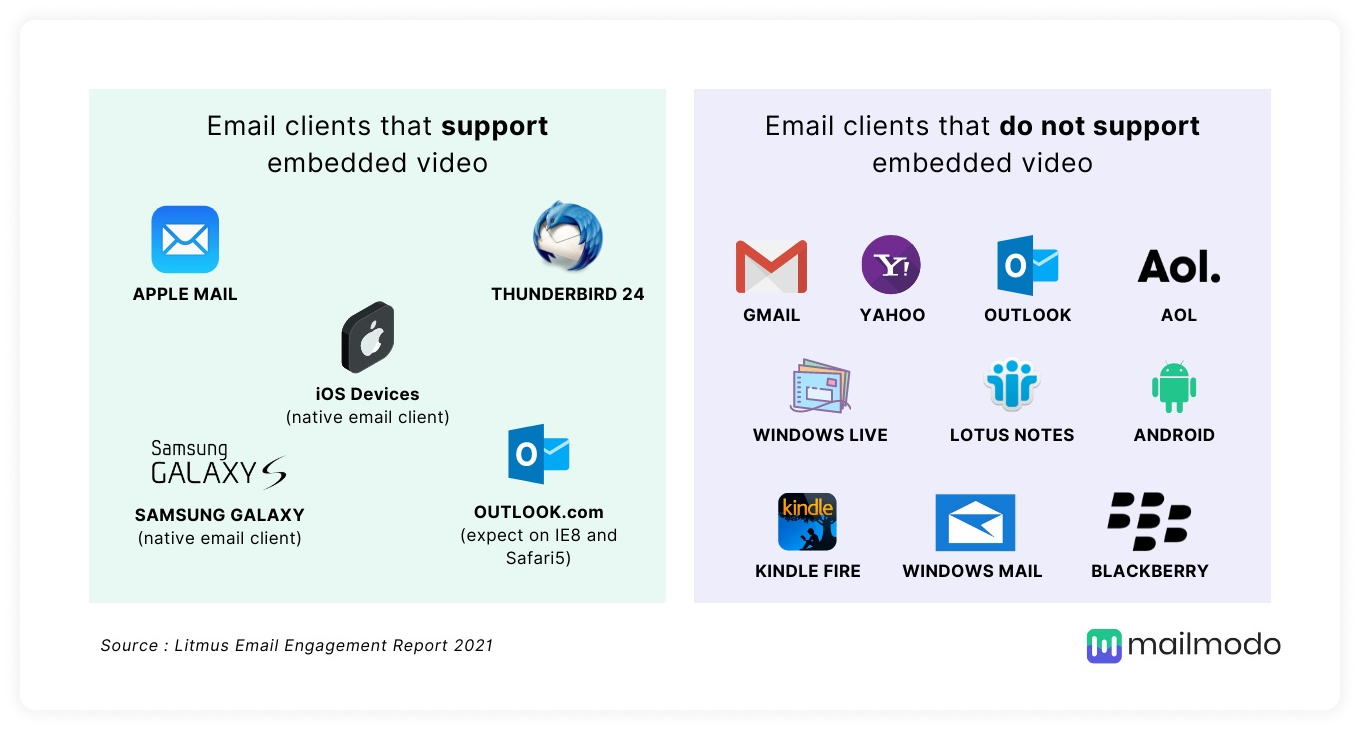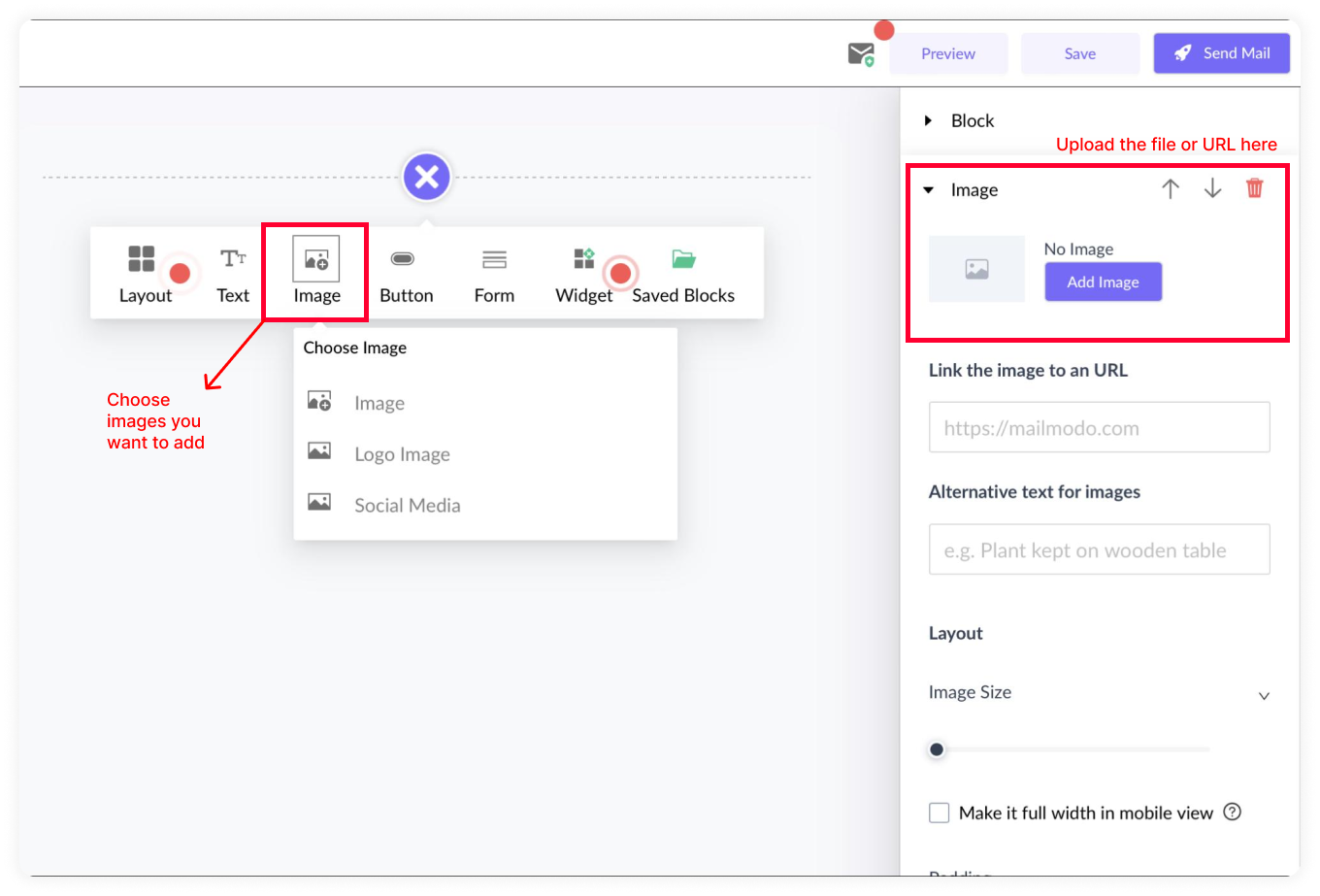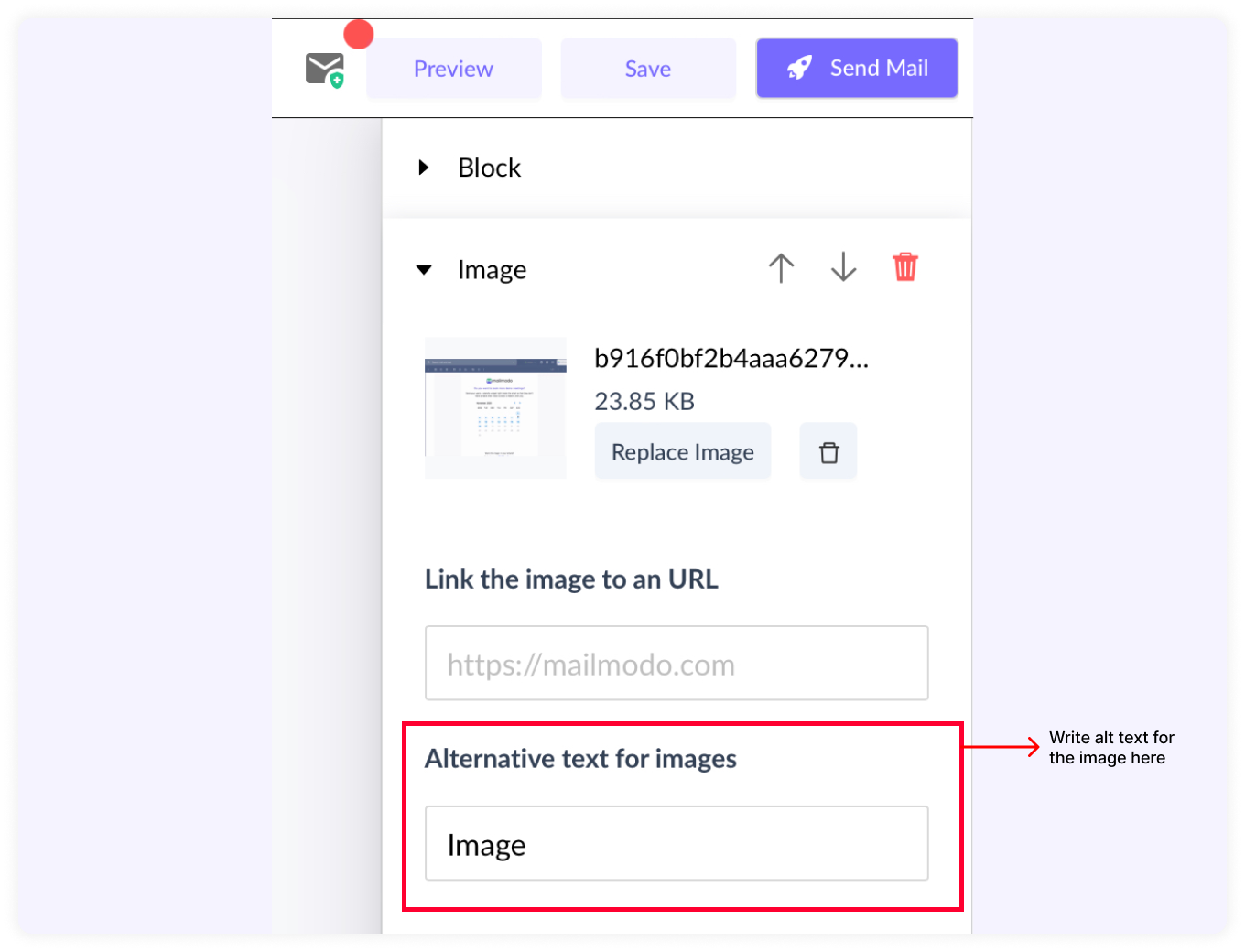Is video in email marketing your thing? It depends.
If you feel like the text in your email is not enough to capture your audience's attention and want to build a connection with them, you can use videos in your email marketing strategy.
But this is just one factor, and there are several other factors to consider to decide whether you want to use videos in your emails or not.
Here, we'll discuss all the pros and cons of using videos in emails to help you decide if it'll benefit your brand or not.
Table of contents
- What is video email marketing?
- Why use videos inside emails?
- Why can using videos inside emails be bad for your campaign?
- Is there an alternative to video for email marketing?
- How to add video in emails?
- Wrapping Up
What is video email marketing?
Video email marketing is when you send videos in your marketing emails to help capture viewers' attention and convey information in an easy-to-understand way.
The video could be played in the email itself by embedding them in the email using HTML5. But whether the people who receive the email can play the video is a whole other ball game.
Why use videos inside emails?
Let's look at why one would want to use videos in email marketing and the benefits of using them.
✅ Helps make information easy to understand
You may have noticed when you had looked up a concept on Youtube, you were able to understand it better by watching the video than when you read the same thing in your textbook.
A video format makes the delivery of information easier as our brain can understand and recall visual information more than text. This is why people use videos in their emails to help readers digest a dense topic in a shorter amount of time.
✅ Helps increase your open and click rates
According to an analysis done by Mediapost, the use of the word “video” in the email’s subject line can help to increase open rates by nearly 13%.
For example, if your customer has expressed interest in your product, you can send them an email with the subject line saying, "Here is a video demo for XYZ product."
This will build people’s curiosity and get them to open the email to see what the video might contain. And the video can get people to click on the email CTA to either see the full video on your site or buy the product.
Why can using videos inside emails be bad for your campaign?
After looking at the pros of using videos in email marketing, it might seem like it's too good to be true. That's is because it is and there are several drawbacks of it that you should know about before you decide to use it. Here they are:
• Lack of video support by email clients
If a video is embedded within the email then there are chances of your videos not being shown in the email. A majority of email clients don't support the embedding of videos, and thus, users who use those email clients won't be able to see the video.
Here is a list of the most common email services that do or don't support embedded videos.

So if a majority of your subscribers use Gmail, then it would be pointless to send videos in emails as they won't be playable inside Gmail.
• Can negatively impact your email’s deliverability
Due to the lack of support by email clients for embedded videos, as discussed above, including video in the email can lead to it being marked as spam.
If you are marked as spam, even your future emails can end up in spam rather than your subscriber's inbox.
Also Read: 12 Proven Strategies to Increase Your Email Deliverability
• Requires extra resources to create videos rather than images or GIFs
A video requires filming equipment, a production team, editors, and many other resources to create if you are going to create one from scratch.
It needs more investment of time and money when compared to creating a few images or GIFs. But, if you already have videos in your arsenal, you can reuse them for emails and create campaigns including them.
• Can be slow to load if the file size is large
Images are usually a smaller file size which makes them faster to load whereas most video files can be too big for emails. And if the video file size is too big, it takes a long time to load your email, which can annoy the readers.
So if you want to add a video file, keep it 101 KB or less
Is there an alternative to video for email marketing?
Yes, there are a few alternatives available that can be comparable alternative to videos or something which encourages the same amount of engagement from the users.
1. GIFs
A GIF is essentially a short video in an image format that can be inserted into your email easily since nearly all email clients accept the image format. GIFs are smaller in file size than video, making them load faster and provide a good customer experience.
You can use them to preview the video and create curiosity, making the readers want to click and view the full video.

However, when you use GIFs, people still have to click to view the entire video and will be taken to a separate landing page.
It may not be perfect but it's the best alternative to videos that don't have the same disadvantages as videos. It can help portray a reasonably high-quality video experience in an email without using a video.
2. Image with a play button
You can add an image of your video with a play button on top and add a button linking to the video on YouTube or your landing page. The play button gives the readers a clear idea that it is supposed to be a video, and when they click on the button, it'll lead them to the video.

This way, if the video is the main factor in the email, you can use it to send your email campaign without landing in spam. We'll talk more about how to use this alternative for your campaign further down below.
3. AMP for email
If your aim with using videos in email is to get more people to engage with your email, then an alternative you can use is AMP for email. So, in a nutshell, AMP is a feature that enables you to add dynamic elements in your email that users can interact with within the email itself.
So with AMP email, you can add features like carousels, forms, surveys, and accordions to get people to engage with your email, and you can get real-time data on how they are engaging with your email.
If you want to know more about AMP and how to use AMP for your industry, check out this article.
How to add video in emails?
If you still want to use videos in emails then here are a few ways you can add videos to your email:
1. Add it as an attachment
If your video file size is less than 25MB, you can send it as an attachment using the email client you use. In Gmail, you can either add the video as an attachment from your Google Drive or upload it from your computer. But do note that this method is not possible if you have a larger file size.
2. Adding the link in the email body
Now if don't want to send over the actual file, you can use this method. First, you'll have to post your video on any video hosting platform like Youtube, Vimeo, etc. Then, you can share the link to the video in your email.
3. Embed it in the body as a playable video using HTML5
You can use HTML5 to embed video in the body of your email. However, this requires a bit of coding knowledge and also will not render in most email clients as we have seen previously. So, while this is possible, we would not recommend this due to the plethora of issues that come with it.
4. Embed it in the body as an image or GIF with a button to open it on a separate web page.
This is the best way to add a video to your email, it has a visual that makes it interesting while also not affecting your deliverability. To add the video as a static image or GIF with a button you need to follow the below-mentioned steps in order.
- Create a thumbnail image or GIF to send in the email.
Select an image or GIF you want to use to send in your email and using editing software like Canva add a play button on top of the image.
Adding the play button gives people an indication that it is a video which can make people want to click and go view the full video.
If you use a GIF, then make sure that the vital information is shown in the first frame because if the email client doesn't support GIFs, then it will only show a static image of the first frame of the GIF.
- Insert the image in the campaign. Now that you have the thumbnail ready it’s time to add it to your campaign. If you use email software like Mailmodo, then there will be a place where you can add images to the campaign.
Click on the images option and add the thumbnail you have created.

Once you have added the image or GIF, it's time to add an alt text which explains what’s in the video so that the email still makes sense if the thumbnail doesn’t load.

Now, most email software will have an area where you can link the image to an URL as shown in the image above. You can utilize it and link it to your video so that even if the reader just clicks on the image, they are still taken to the video’s landing page.
- Add a call-to-action button below the image.
After you have added the image to your campaign, it's time to add a button that takes people to the video's landing page. Add the main CTA of the video directly below the image and write a CTA like click here to watch, or play now.
You must make sure that the video is already hosted online on either your website or video platform like YouTube as only then will you be able to direct readers to it.
Wrapping Up
Using videos in your email marketing can either be beneficial or harmful to your results based on how you add and send them. So unless you want to take such a risk, it's best to stick to using images and GIFs in your email.
But if most of your subscribers use Apple Mail or other email clients who support video, you can use videos as a part of your email campaigns. If you do decide to use video in the email, then be mindful and follow the steps mentioned above to add videos to your campaign the right way.

